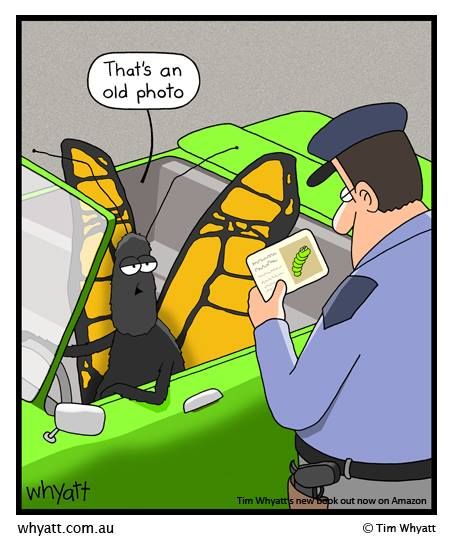Anyone can toilet paper a house or slip a whoopee
cushion onto a chair. Pulling off a truly legendary prank is harder. To
fool the media, crowds, and even the military, you need patience,
planning, and more than a little genius. But when everything comes
together into one big victimless laugh, it’s a thing of beauty. Here
are history’s greatest hoaxes, each one proof that with effort and a
little luck, you can fool a lot of the people, all of the time.
1. The Birth of the Bathtub!
December
20 gets no respect. On the calendar, it’s just another winter day best
known for not being Christmas. But in 1917, writer H. L. Mencken set
out to change that. When readers of the
New York Evening Mail
opened the paper in late December, they found Mencken’s 1,800-word
essay “A Neglected Anniversary,” detailing the arrival of the bathtub in
the United States. Mencken meticulously cataloged the tub’s rocky
debut in 1842, explaining how the bathroom fad had caught on only after
Millard Fillmore installed one in the White House. By the 20th
century, Mencken explained, the momentous anniversary had fallen into
obscurity. “Not a plumber fired a salute,” he lamented. “Not a governor
proclaimed a prayer.”
There’s a good reason why. Mencken had
made the whole thing up. The humorist figured everyone would see
through the ruse, and he later wrote that the article was “harmless
fun” meant to distract readers from World War I. “It never occurred to
me it would be taken seriously,” he wrote.
But printing the piece in the
Evening Mail
gave Mencken’s little joke extra credibility, and he was stunned by
how the story snowballed. Within a few years, it had been referenced in
“learned journals” and cited “on the floor of Congress.” The tale
became so pervasive that the
Boston Herald ran an article in
1926 debunking it under the headline "The American Public Will Swallow
Anything." Three weeks later, the same paper cited Mencken’s bathtub
origin tale as fact.
Mencken tried to set the record straight, but
his efforts were futile. People were more interested in hearing about
President Fillmore’s tub than hearing the truth. Even today, the nugget
resurfaces from time to time: In 2008, the story was featured in a Kia
ad, which hailed Fillmore as “best remembered as the first president
to have a running water bathtub.” Poor guy can’t even be remembered for
something he actually did.
2. Sherlock Holmes Finds the Missing Link

Ever since Darwin published
On the Origin of Species,
scientists have been looking for the missing link—a transitional
fossil that would seal the argument for human evolution. In 1912, an
amateur geologist and archaeologist named Charles Dawson found it. The
skull he pulled from a gravel pit in Piltdown, England, seemed to
conclusively fit the part, and the discovery rocked the scientific
community. Skeptics claimed the fossil was exactly what it looked like:
a human skull cobbled together with an ape jaw to fool gullible
scientists. In the ensuing excitement, believers shouted down deniers,
and in December 1912, the Geological Society of London hosted a
ceremony where Dawson presented his fossil, the Piltdown Man.
The
doubters continued doubting until 1917, when researchers discovered a
similar fossil nearby. The Piltdown faithful were thrilled: the new
find, Piltdown II, seemingly legitimized the old one.
But
the Piltdown Man’s scientific legitimacy gradually eroded over the
next few decades. Other early human skulls began popping up in China
and Africa, and each had an apelike skull with a human jaw: the
opposite of the Piltdown combo.
The jig was finally up in 1953.
After conducting tests on the skull, anthropologist Joseph Weiner and
geologist Kenneth Oakley determined Piltdown Man was no man at all.
Rather, he was a combination of man (the skull), orangutan (the jaw),
and chimp (the teeth). What’s more, fluorine dating showed that the
bones were no more than 100,000 years old, certainly not new but not
missing-link ancient. The head looked older only because the hoax’s
perpetrator had stained it with iron and chromic acid.
While the
hoax was eventually exposed, the prankster behind the caper is still at
large. Dawson is the most likely culprit, but literary sleuths have
turned their suspicions to another man: Sherlock Holmes’s creator, Sir
Arthur Conan Doyle. Not only was Conan Doyle a member of Dawson’s
archaeological society and a frequent visitor to the Piltdown site, he
hinted in his novel
The Lost World that faking bones is no tougher than forging a photograph—the ultimate smoking gun! If only Holmes were on the case.
3. Italy’s Secret Pasta Gardens
Where does spaghetti come from? On April 1, 1957, the BBC news program
Panorama
tackled the question with a segment about a Swiss town’s robust
spaghetti crop, brought on by a warm spring and the disappearance of the
spaghetti weevil. “For those who love this dish, there’s nothing like
real homegrown spaghetti,” anchor Richard Dimbleby said.
Viewers
ate it up. On April 2 the BBC was flooded with hundreds of phone calls
from people eager to grow their own noodles, then a rare treat for
British diners. Keeping the whimsy going, the BBC instructed anyone
interested in a pasta-bearing tree to “Place a sprig of spaghetti in a
tin of tomato sauce and hope for the best.”
4. The World’s Worst Bestseller

Everyone
knows you can’t judge a book by its cover. But the aphorism got an
extra dose of validity in 1969, when Penelope Ashe, a bored Long Island
housewife, wrote the trashy sensation
Naked Came the Stranger.
As
part of her book tour, Ashe appeared on talk shows and made the
bookstore rounds. But Ashe wasn’t what her book jacket claimed. The
author was as fictional as the novel she supposedly wrote—and both were
the work of Mike McGrady, a Newsday columnist disgusted with the lurid
state of the modern bestseller. Instead of complaining, he decided to
expose the problem by writing a book of zero redeeming social value and
even less literary merit. He enlisted the help of 24
Newsday
colleagues, tasking each with a chapter, and instructed them that there
should be “an unremitting emphasis on sex.” He also warned that “true
excellence in writing will be quickly blue-penciled into oblivion.” Once
McGrady had the smutty chapters in hand (which included acrobatic
trysts in tollbooths, encounters with progressive rabbis, and cameos by
Shetland ponies), he painstakingly edited the prose to make it worse.
In 1969, an independent publisher released the first edition of
Naked Came the Stranger, with the part of Penelope Ashe played by McGrady’s sister-in-law.
To
the journalist’s dismay, his cynical ploy worked. The media was all
too fascinated with the salacious daydreams of a “demure housewife”
author. And though
The New York Times wrote, “In the category
of erotic fantasy, this one rates about a C,” the public didn’t mind. By
the time McGrady revealed his hoax a few months later, the novel had
already moved 20,000 copies. Far from sinking the book’s prospects, the
press pushed sales even higher. By the end of the year, there were more
than 100,000 copies in print, and the novel had spent 13 weeks on the
Times’s
bestseller list. As of 2012, the tome had sold nearly 400,000 copies,
mostly to readers who were in on the joke. But in 1990, McGrady told
Newsday he couldn’t stop thinking about those first sales: “What has
always worried me are the 20,000 people who bought it before the hoax
was exposed.”
5. Bipedal Beavers, Unicorns, and Other Moon Monsters
Much
like submarines, submarine sandwiches, and the U.S. Constitution, the
ethics of journalism were still evolving in the early 19th century. One
rule that hadn’t totally sunk in yet: Don’t ply your readers with
outright fabrications. The newspapers of the day routinely manufactured
stories to generate sales, but none was as outrageous as the New York
City rag
The Sun’s “Great Moon Hoax,” a series of six articles published in 1835 about the discovery of civilization on the moon.

The
articles claimed that a British astronomer named John Herschel had
used a powerful new telescope to spot plants, unicorns, bipedal
beavers, and winged humans there. The articles even went a step further,
claiming that our angelic moon brethren collected fruit, built temples
from sapphire, and lived in total harmony. The hoax was debunked
immediately. Soon after the first installment ran in
The Sun, its uptown competition, the
New York Herald, slammed the story under the headline "The Astronomical Hoax Explained."
But
the American public preferred a universe dotted with angels, unicorns,
and bedazzled architecture. The story created such a buzz that papers
around the world rushed to reprint it, while a theater company in New
York worked out a dramatic staging. Before long,
The Sun was
making extra coin selling pamphlets of the whole series and
lithographic prints that depicted life on the moon. It took five years
for the story’s writer, Richard Adams Locke, to finally confess to
making it all up. As he wrote in the
New World, his intention
was to satirize “theological and devotional encroachments upon the
legitimate province of science.” But in all this, the thing we can’t
believe is that no New York team has embraced the moon beaver as its
mascot.
6. A Math Whiz Horse!

Is
a hoax still a hoax if the perpetrator doesn’t know it? Wilhelm von
Osten would likely say no. At the turn of the 20th century, the German
math teacher was determined to prove the intelligence of animals. After
trying (and failing) to teach a cat and a bear how to add, he finally
found a sufficiently studious beast. With years of training, a horse
named Hans could add, subtract, multiply, and read German.
Von
Osten held regular displays of his star pupil’s intelligence. Hans
would calculate sums and convert fractions by tapping a hoof to
indicate numbers. He became a national sensation, made headlines in the
United States, and earned the nickname Clever Hans. To prove that the
horse’s skills were real, Von Osten allowed a group of experts to
examine his equine genius. They found nothing fishy, and Germany
embraced Hans as a marvel until psychology student Oskar Pfungst came
along.
Unsatisfied with the work of the experts, Pfungst examined
Hans and figured out how the horse was doing its calculator act. Von
Osten was sending him subconscious signals. Each time Hans was
presented with a math question, he’d tap away until a subtle cue on his
owner’s face told him to stop. The cues were so subtle that Von Osten
didn’t even know he was giving them. Indeed, the horse got problems
right only when they were simple enough for Von Osten to solve, and his
percentages plummeted when he wasn’t allowed to face his master. When
Pfungst exposed the truth, Von Osten denied it, insisting that Hans
really was clever, and he continued to parade his horse before happy
crowds. Today, animal psychologists know to write off these cues as the
“Clever Hans effect.”
7. The Supergroup That Never Got To Rock

Music fans got exciting news in 1969 when
Rolling Stone
reviewed the first album by the Masked Marauders, a supergroup
featuring Bob Dylan, Mick Jagger, John Lennon, and Paul McCartney. Due
to legal issues with their respective labels, the stars’ names wouldn’t
appear on the album cover, but the review extolled the virtues of
Dylan’s new “deep bass voice” and the record’s 18-minute cover songs.
One of the album’s highlights was an extended jam between bass guitar
and piano, with Paul McCartney playing both parts! The writer earnestly
concluded, “It can truly be said that this album is more than a way of
life; it is life.” For anyone paying attention, the absurd details
added up to a clear hoax. The man behind the gag, editor Greil Marcus,
was fed up with the supergroup trend and figured that if he peppered
his piece with enough fabrication, readers would pick up on the joke.
They
didn’t. After reading the review, fans were desperate to get their
hands on the Masked Marauders album. Rather than fess up, Marcus dug in
his heels and took his prank to the next level. He recruited an
obscure San Francisco band to record a spoof album, then scored a
distribution deal with Warner Bros. After a little radio promotion, the
Masked Marauders’ self-titled debut sold 100,000 copies. For its part,
Warner Bros. decided to let fans in on the joke after they bought the
album. Each sleeve included the
Rolling Stone review along with
liner notes that read, “In a world of sham, the Masked Marauders,
bless their hearts, are the genuine article.”
8. How April Fools’ Day Didn’t Get Its Name
As
Joseph Boskin would tell you, the origins of April Fools’ are murky.
In fact, the Boston University professor and pop culture historian was
trying to say just that in a 1983 interview with reporter Fred
Bayles. But each time Boskin told Bayles that no one is quite sure how
the holiday started, the interviewer pushed him for a more concrete
answer. Eventually, the academic got fed up with the aggressive
questioning and decided to concoct a story worth printing.
Off
the top of his head, Boskin began regaling Bayles with a tale from the
days when Constantine ruled Rome. Jesters, he said, petitioned the
emperor to allow one of their own the chance to rule for just one day.
On April 1, Constantine relented. A jester, King Kugel—Boskin named
him for the Jewish pudding dish—took over and proclaimed that April 1
would always serve as 24 hours of silliness.
Boskin later said he
made the story so absurd that Bayles would have to catch on. No dice.
The AP ran Bayles’s story about King Kugel, and soon Boskin was
fielding calls from news outlets across the country. He initially kept
up the ruse, but a few weeks later, the truth slipped out during one
of his lectures about the media’s willingness to believe rumors. The
editor of the school paper was in the class, and the campus
Daily Free Press ran a headline declaring “Professor Fools AP.”
Once
the truth was out, the AP was predictably embarrassed, but the story
has a happy ending. Bayles, no longer an eager reporter, is now a
professor of journalism at BU, where he can speak from personal
experience about the media’s gullibility.
9. Virginia Woolf Ships Out
Before
Virginia Woolf and E. M. Forster were literary titans and before John
Maynard Keynes was the father of modern economics, they were part of a
crowd of friends that informally called themselves the Bloomsbury
Group. Comprising writers, artists, and thinkers, the group basically
functioned as a fraternity for geniuses. So it’s fitting that the
group’s lasting legacy is a piece of tomfoolery.

In 1910, the
HMS Dreadnought
was the fiercest, strongest ship in the Royal Navy. To the poet
William Horace de Vere Cole, it seemed like the perfect place for the
Bloomsbury Group to stage a high-concept prank. Cole, Woolf, her
brother Adrian Stephen, and three pals decided to sneak aboard the
Dreadnought,
disguised as the emperor of Abyssinia and his entourage. Why risk the
wrath of the Royal Navy? Because it was funny! The group sent a phony
telegram to the ship’s commander, letting him know that a delegation
was en route, then they simply showed up at the ship.
Amazingly,
it worked. Dressed in caftans, turbans, and gold chains and with their
faces painted black, the “Abyssinians” were welcomed aboard the
Dreadnought
with an honor guard, a red carpet, and a naval band. Despite the
intentionally amateurish costumes, including at least one mustache
that began falling off in the rain, the Abyssinians stayed in character
for the entire tour. When they spoke, it was either to exclaim “Bunga,
bunga!” in excitement or ramble in an invented language of Latin,
Swahili, and gobbledygook. At one point, they were forced to decline a
meal, relaying through Stephen, who was acting as translator, that the
food had not been prepared to their specifications. In reality, they
didn’t eat because they were afraid their makeup would come off.
The
tour ended without the crew suspecting a thing. But then someone
called reporters. British papers had a field day with the story. Sailors
were heckled with cries of “Bunga, bunga” in the streets, and King
Edward himself made his displeasure with the incident known. In the face
of such humiliation, the navy was forced to take action. According to
contemporary accounts, the navy got its revenge by caning two of the
male hoaxers. Woolf was spared the lash because she was a woman, even
though a lady’s mere presence on the ship was one of the greatest
sources of the navy’s embarrassment.
Eventually, though, the Royal Navy developed a sense of humor about the incident. When the
Dreadnought
rammed and sank a German submarine during World War I, its crew
received a congratulatory telegram from superiors. The text? “BUNGA
BUNGA.”
10. A Bordello of Barks

Joey
Skaggs is a professional prankster who plays the media like his
instrument. He’s made waves posing as an outraged gypsy hell-bent on
renaming the gypsy moth. He launched Walk Right!—a fictional group
dedicated to enforcing proper walking etiquette through militant
tactics. But perhaps the best illustration of his life’s work is the
brothel for dogs that he opened in 1976. The prank started when Skaggs
ran an ad in
The Village Voice offering dog owners a chance to
buy their pets a night with alluring companions, including Fifi, the
French poodle. To Skaggs’s surprise, he began getting calls from people
wanting to drop $50 for his service.
It didn’t take much for the
media to bite, and when reporters showed up with questions, Skaggs
reeled them in by staging a night at his “cathouse for dogs.” The stunt
worked; TV stations issued breathless reports of the wanton acts of
canine carnality. The ASPCA launched an investigation, a veterinarian
publicly condemned the brothel, and the New York Health Department
raised concerns about Skaggs’s licensing.
Skaggs eventually
admitted the whole thing was a goof, but not everyone believed him. To
this day, a television producer for WABC New York argues that the
brothel was real and that Skaggs’s hoax claims are just a clumsy
attempt to cover his trail. Of course, WABC has good reason to insist
that Skaggs was running a genuine poodle prostitution ring: The station
won an Emmy for its coverage of the story.
11. MIT Blows Up Harvard!
MIT
students derive great pleasure from tormenting their rivals at
Harvard. Our favorite prank of theirs occurred during the 1982
Harvard-Yale football game when a weather balloon emblazoned with the
letters “MIT” began emerging from the ground near the 50-yard line. In
the preceding days, a group of MIT students had snuck into Harvard
Stadium and wired a vacuum motor to blow air into the balloon until it
exploded, proving once again why you don’t mess with engineers.
12. Greasing the Wheels
Back
in the late 19th century, college teams took trains to get to road
games, and Auburn took full advantage of the situation. For a few
seasons, students ran grease along the train tracks before Georgia Tech
games, making it impossible for the train to stop anywhere near the
station. Year after year, the poor football team ended up lugging its
gear a number of miles back to the station, giving the players more of a
warm-up than they bargained for and tilting the games in Auburn’s
favor.
13. Card Talk
Tricking
opposing fans into holding up placards that spell out a hidden message
is a prank older than time. It was perfected with the Great Rose Bowl
Hoax of 1961, during which students altered the placards given to
University of Washington fans so that the giant banner they formed read
“Caltech” on live television. The math and science school, which sits
just a few miles from the Rose Bowl, wasn’t even involved in the game.
14. The Elusive Northwest Tree-Dwelling Octopus

According
to the species’s official website, the Pacific Northwest tree octopus
is native to the rainforests of Washington State’s Olympic Peninsula.
It spends most of its time frolicking on treetops and snacking on frogs
and rodents. But today, the arboreal cephalopod faces extinction
thanks to rampant predation by the Sasquatch.
That last detail
gives away the joke to most people. But not everyone is so discerning.
The octopus’s meticulous creator—known online as Lyle Zapato—doesn’t
just throw hoaxes onto the web—he brilliantly links back to dozens of
external sites listing everything from short stories about tree
octopuses to videos of a baby tree octopus hatching to recipes for
cooking them. And he throws in just enough legitimate links to throw
readers off his scent. In fact, every statement is laboriously
cross-referenced; most Wikipedia pages would be lucky to have this many
sources.
Taken together, Zapato’s labyrinth of sites can trick
even savvy web surfers into thinking this tree-dwelling octopus exists.
A 2006 study by the University of Connecticut showed that 25 out of 25
web-proficient middle-schoolers fell for the hoax. Even when
researchers told them that tree octopuses don’t exist, the students
couldn’t identify the clues on the site to prove that it wasn’t
factual. The plight of the Pacific Northwest tree octopus is just one
of Zapato’s many causes; he maintains an elaborate site dedicated to
promoting the Bureau of Sasquatch Affairs and one that alleges that the
nation of Belgium doesn’t exist (the deceptive branding of Belgian
waffles fits into his conspiracy theory). Of course, whether you look
at it as art or entertainment, Zapato’s handiwork is a reminder not to
believe everything you read on the Internet.


















 Ever since Darwin published On the Origin of Species,
scientists have been looking for the missing link—a transitional
fossil that would seal the argument for human evolution. In 1912, an
amateur geologist and archaeologist named Charles Dawson found it. The
skull he pulled from a gravel pit in Piltdown, England, seemed to
conclusively fit the part, and the discovery rocked the scientific
community. Skeptics claimed the fossil was exactly what it looked like:
a human skull cobbled together with an ape jaw to fool gullible
scientists. In the ensuing excitement, believers shouted down deniers,
and in December 1912, the Geological Society of London hosted a
ceremony where Dawson presented his fossil, the Piltdown Man.
Ever since Darwin published On the Origin of Species,
scientists have been looking for the missing link—a transitional
fossil that would seal the argument for human evolution. In 1912, an
amateur geologist and archaeologist named Charles Dawson found it. The
skull he pulled from a gravel pit in Piltdown, England, seemed to
conclusively fit the part, and the discovery rocked the scientific
community. Skeptics claimed the fossil was exactly what it looked like:
a human skull cobbled together with an ape jaw to fool gullible
scientists. In the ensuing excitement, believers shouted down deniers,
and in December 1912, the Geological Society of London hosted a
ceremony where Dawson presented his fossil, the Piltdown Man.
 First
Citizens Bank in Hull, Georgia, has several account holders with the
same name. But instead of double checking account numbers, they
deposited one man’s $31,000 into the account of an 18-year-old with the
same name. The teenager must have felt like he won the lottery, because
that’s how he acted. He withdrew $20,000 in cash and spent $5,000 with
his bank card. It was March 17, ten days after the deposit, before the
original depositor complained to the bank. Only then did the bank
discover the error.
First
Citizens Bank in Hull, Georgia, has several account holders with the
same name. But instead of double checking account numbers, they
deposited one man’s $31,000 into the account of an 18-year-old with the
same name. The teenager must have felt like he won the lottery, because
that’s how he acted. He withdrew $20,000 in cash and spent $5,000 with
his bank card. It was March 17, ten days after the deposit, before the
original depositor complained to the bank. Only then did the bank
discover the error.






